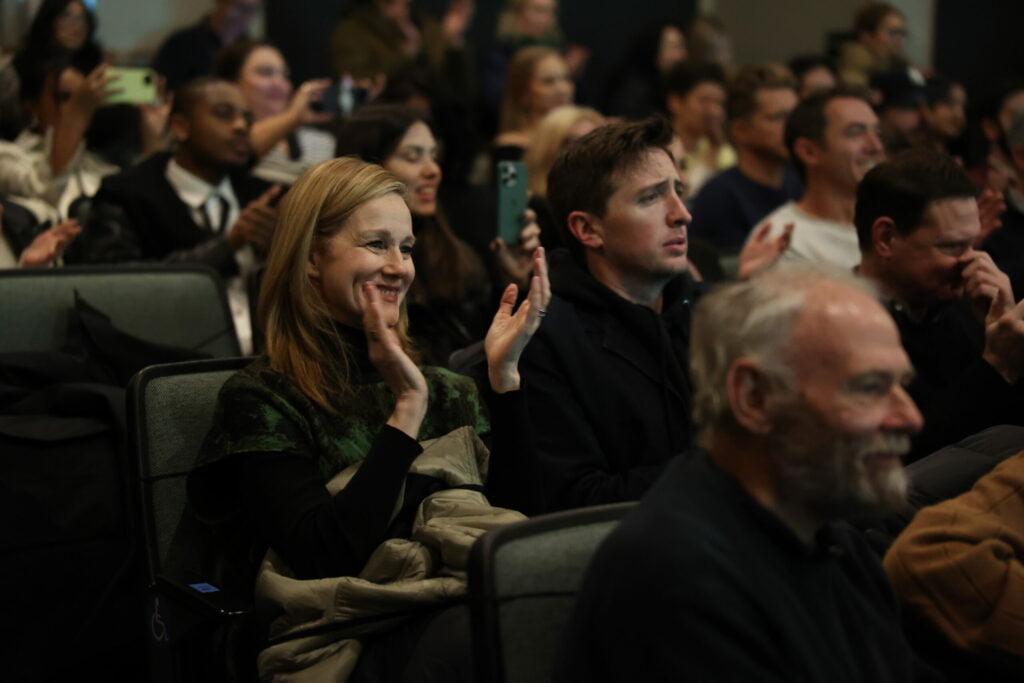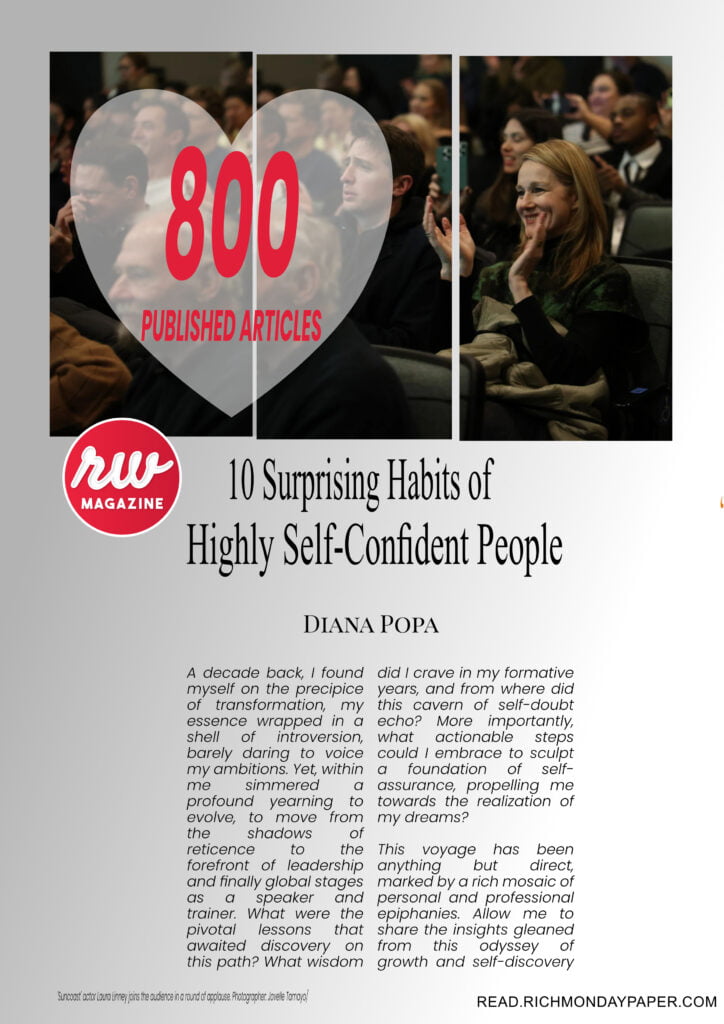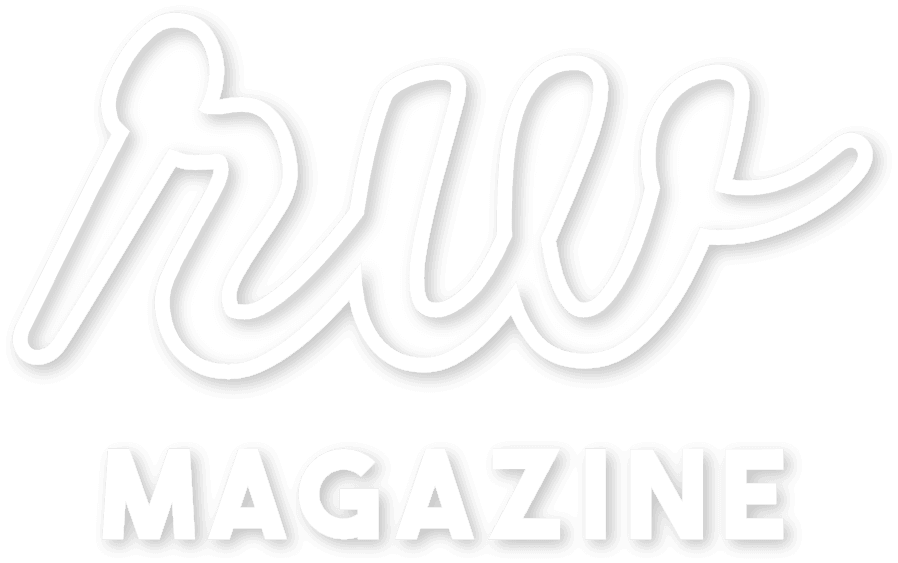10 Surprising Habits of Highly Self-Confident People

A decade back, I found myself on the precipice of transformation, my essence wrapped in a shell of introversion, barely daring to voice my ambitions. Yet, within me simmered a profound yearning to evolve, to move from the shadows of reticence to the forefront of leadership and finally global stages as a speaker and trainer. What were the pivotal lessons that awaited discovery on this path?
What wisdom did I crave in my formative years, and from where did this cavern of self-doubt echo? More importantly, what actionable steps could I embrace to sculpt a foundation of self-assurance, propelling me towards the realization of my dreams?
This voyage has been anything but direct, marked by a rich mosaic of personal and professional epiphanies. Allow me to share the insights gleaned from this odyssey of growth and self-discovery about the 10 habits of highly self-confident people.
Envision Triumph
Embarking on the path to success begins in the mind. The act of visualizing your triumph is not just a hopeful exercise; it’s a potent method that bridges the gap between your current reality and the future you desire. This process involves vividly imagining achieving your goals, experiencing the feelings, sights, and even sounds associated with success, making it a multisensory experience.
Visualization is rooted in the science of neuroplasticity, the brain’s ability to form and reorganize synaptic connections, especially in response to learning or experience. When you vividly imagine your success, you’re essentially training your brain to recognize and pursue the paths that will lead you there. It’s akin to creating a mental blueprint; the more detailed and vivid the blueprint, the more effectively your brain can navigate towards your goals.
Create a clear vision: Begin with clarity. Define what success looks like to you in vivid detail. What are you achieving? How does it feel? Who is with you? What are the sounds and scents around you? The more detailed your vision, the more real it becomes to your mind.
Engage your emotions: The power of visualization is magnified when you engage your emotions. Feel the joy, pride, gratitude, or excitement you would experience upon achieving your goal. These emotions create a strong vibrational frequency that attracts your desires toward you.
Practice regularly: Like any skill, visualization becomes more effective with practice. Dedicate time daily to immerse yourself in your vision. This consistent practice not only reinforces your goals within your subconscious but also keeps you aligned and motivated.
Use visualization to overcome obstacles: When facing challenges, use visualization to imagine overcoming these hurdles. This practice builds resilience and a problem-solving mindset, preparing you mentally to navigate the inevitable ups and downs on your path.
Combine it with action: Visualization is most effective when paired with action. Use the clarity and motivation derived from your visualization practice to take concrete steps toward your goals. This creates a powerful synergy between your mental and physical efforts, accelerating your journey to success.
Reflect and adjust: As you move forward, periodically reflect on your vision and the progress you’ve made. Be open to adjusting your visualization as your goals evolve or as you gain new insights. This flexibility allows you to stay relevant and aligned with your deepest aspirations.
Envisioning triumph is more than just an optimistic outlook; it’s a strategy that primes your entire being for success. By vividly imagining your achievements, you not only align your subconscious with your goals, but also open yourself to the opportunities and insights that can turn your vision into reality.
The Power of Belief
Imagine stepping into the realm of your dreams, where the seeds of your greatest aspirations take root in the fertile ground of your belief, even before they bloom into reality. This is the essence of belief – the profound understanding that your faith in the outcome fuels the journey toward its realization. It is a powerful shift from hoping to knowing, from dreaming to manifesting.
Belief acts as a beacon, guiding us through the fog of uncertainty and the inevitable challenges that arise. It is the inner conviction that what we seek is not only possible, but is already on its way to us. This conviction isn’t baseless optimism; it is rooted in the understanding of our own power to influence our lives and shape our destinies.
Embracing the unknown: The journey towards any significant achievement is often paved with unknowns. These unknowns can be daunting, filled with “what-ifs” that challenge our resolve. However, embracing the unknown with belief transforms these challenges into opportunities for growth and learning. It means viewing every obstacle not as a roadblock, but as a steppingstone, an essential part of the path that is shaping us into the individuals capable of realizing our dreams.
Building patience and resilience: Patience and resilience are the companions of belief. They remind us that great things take time to unfold and that the path to success is rarely linear. Our belief nurtures patience by keeping our eyes on the prize, allowing us to view each day as a step closer to our goal, even when progress seems slow. It builds resilience by fortifying our spirit against setbacks and failures, knowing that each one of them is a lesson leading us closer to our aim.
The warrior’s mindset: Adopting a warrior’s mindset means recognizing that the battle for our dreams is fought not with swords, but with the strength of our convictions. A warrior does not require a Plan B, as their entire being is committed to Plan A. This total commitment is a testament to the power of belief. It is understanding that safety nets can sometimes hold us back from our full potential. When we pour all our energy into our primary vision, the universe conspires to assist us, opening doors we never knew existed.
Without belief, action is hollow: Action without belief is like a ship without a sail—directionless and at the mercy of the currents. It’s our belief in our vision that infuses our actions with purpose and direction. This belief motivates us to persevere through challenges and to find innovative solutions to obstacles. It’s the difference between merely going through the motions and moving forward with intention and conviction.
Cultivating belief: It all starts with visualizing the desired outcome, with as much detail and emotion as possible, as we already mentioned it above. It involves affirming our capabilities and worthiness to achieve our dreams. It requires us to surround ourselves with reminders of our vision, keeping it at the forefront of our minds and letting it permeate every action and decision. Most importantly, it asks us to trust: trust ourselves, trust the process, and trust the timing of our lives.
In embracing belief, we unlock an unparalleled strength within ourselves. It is the force that propels us through the unknown, armed with the certainty that what we seek is not just a possibility, but an inevitability waiting to manifest.
Embrace Vulnerability
In a world that often equates vulnerability with weakness, choosing to embrace it, is both a revolutionary act and a profound journey back to our authentic selves. Vulnerability is not about exposing our flaws for the sake of it; it’s about opening our hearts, sharing our truths, and connecting with others on a deeply human level. It’s the courage to be seen, truly seen, in all our imperfect glory.
The strength in being open: Being open and vulnerable is an undeniable strength. It involves shedding the layers of protection we’ve built around ourselves—layers of pretense, perfectionism, and guardedness that distance us from others. When we allow ourselves to be vulnerable, we invite genuine connection, understanding, and compassion. It’s in these moments of openness that we often find our greatest sources of strength and support.
The balance of sharing: Finding the right balance in sharing our stories and achievements is crucial. It’s about knowing when our experiences can inspire and uplift, and when they might overwhelm or alienate. Sharing from a place of vulnerability means being mindful of our intentions. Are we seeking validation, or are we hoping to connect, to comfort, to empower?
Stories as bridges: Our stories are bridges that connect us to others. By showing that we haven’t got it all figured out, that we face challenges and make mistakes, we make it okay for others to do the same. This doesn’t diminish our achievements or our strength; rather, it highlights our humanity and fosters a space where others feel safe to share and be themselves. It’s a powerful reminder that we’re all works in progress, navigating the complexities of life as best we can.
The right moment for everything: There is a right moment for everything – a time to share and a time to listen, a time to celebrate our victories and a time to acknowledge our struggles. Discerning these moments requires a deep sense of self-awareness and empathy. It’s about tuning into the needs of the moment, whether ours or someone else’s, and responding with kindness, authenticity, and respect.
Embracing vulnerability as a path to growth: Ultimately, embracing vulnerability is a path to growth. It challenges us to confront our fears, to question the narratives we’ve constructed about ourselves and the world around us. It asks us to be brave, to risk misunderstanding and judgment in the pursuit of deeper connections and a more authentic life. This path is not easy, but it is incredibly rewarding. It leads us to a place of greater self-acceptance, compassion, and connection, a place where we can fully embrace our humanity and the humanity of others.
In embracing vulnerability, we find a wellspring of courage within ourselves. It’s the courage to be imperfect, to admit we don’t have all the answers, and to show up authentically in a world that often demands conformity. This courage doesn’t just change how we see ourselves; it changes how we interact with the world. It’s a powerful testament to the strength that lies in openness, connection, and the shared experience of being beautifully, messily human.
Lifelong Learning
The journey of lifelong learning is an expedition without end, a road that stretches infinitely into the horizon, with each bend offering new vistas of knowledge and wisdom. This chapter is an ode to the insatiable curiosity that resides within us, urging us to look beyond what we know, to question, to explore, and to grow. It’s a celebration of learning as a way of life, not confined to the walls of classrooms or the pages of textbooks, but woven into the very fabric of our daily existence.
Beyond conventional education: Education, in its traditional sense, often feels like a structured pathway we’re all expected to follow: school, college, perhaps further academic pursuits. Yet, the true essence of learning extends far beyond these formalities. It encompasses the lessons we glean from experiences, the insights we gain from failures, and the understanding we cultivate through interactions with the world around us. Lifelong learning invites us to view every moment as an opportunity to expand our minds and hearts.
Cultivating curiosity: Curiosity is the compass that guides us on this journey of continual learning. It prompts us to ask questions, to delve deeper into subjects that intrigue us, and to seek out new experiences that challenge our perspectives. By nurturing our curiosity, we open ourselves up to a world of endless possibilities. We learn not because we have to but because we want to, driven by the joy of discovery and the thrill of understanding something new.
The growth mindset: Central to lifelong learning is the growth mindset—the belief that our abilities and intelligence can be developed through dedication and hard work. This mindset sees challenges as opportunities for growth, rather than insurmountable obstacles. It encourages us to persevere in the face of setbacks, knowing that effort and resilience are key to mastery and success. With a growth mindset, we embrace learning as a dynamic process, where the goal is not merely to accumulate knowledge but to evolve and adapt continuously.
Learning as a resource: In an ever-changing world, the knowledge and skills we possess today may not suffice tomorrow. Lifelong learning equips us with the resourcefulness to navigate these shifts. By constantly updating our understanding and adapting to new information, we become more agile and capable of tackling the challenges that the future holds. This ongoing process of learning ensures that we remain relevant and competitive, both professionally and personally.
The ripple effect of learning: The impact of lifelong learning extends far beyond the individual. It has a ripple effect, influencing our communities, workplaces, and societies. Educated individuals are more likely to engage in civic activities, contribute to innovation, and foster a culture of knowledge sharing. By committing to lifelong learning, we not only enrich our own lives, but also contribute to the collective wisdom and progress of humanity.
Embracing learning as a lifestyle: To integrate learning into the fabric of our lives, we must adopt practices that encourage continual growth. This could mean setting aside time for reading, engaging in discussions, attending workshops, or even teaching others. It’s about creating a personal ecosystem that supports and stimulates our intellectual and emotional development.
Lifelong learning is not just an approach to education; it’s a philosophy for living. It challenges us to remain humble in the face of the vast expanse of what we do not know, to stay curious, and to keep moving forward with an open heart and an eager mind. In this way, we ensure that our journey through life is not just about reaching destinations but about savoring the infinite learnings along the way.
Detaching Self-Worth from Outcomes
In a world where success is often measured by tangible achievements and the approval of others, it’s easy to fall into the trap of tying our self-worth to external outcomes. This chapter explores the liberating journey of detaching our sense of value from the results of our efforts, inviting us to find intrinsic worth and fulfillment in the process, rather than just the destination.
The illusion of external validation: Society and culture have conditioned us to seek validation and worth through achievements, accolades, and the approval of others. However, this pursuit is a precarious one, as it places our happiness and sense of self in the hands of variables beyond our control. Detaching our self-worth from outcomes means recognizing that our value is not contingent on external validation but is inherent within us.
Embracing the process: One of the most profound shifts we can make is to fall in love with the process of our endeavours, not just the end result. This means finding joy in the act of creation, learning, and growth, regardless of the outcome. When we focus on the journey, we open ourselves to a deeper level of satisfaction and fulfillment that is not dependent on success or failure. This approach allows us to engage more fully with our work and our passions, creating a more enriching and rewarding experience.
The freedom of non-attachment: Non-attachment is a concept often discussed in mindfulness practices, suggesting a state of engaging fully with life while not being ensnared by the outcomes of our actions. By detaching our self-worth from outcomes, we achieve a sense of freedom that enables us to take risks, innovate, and pursue our true desires without the fear of failure or rejection. This freedom is empowering, allowing us to live more authentically and pursue our goals with a sense of peace and equanimity.
Self-worth from within: Cultivating a sense of self-worth that is independent of outcomes involves introspection and self-compassion. It requires us to recognize and appreciate our inherent qualities, such as kindness, creativity, intelligence, and resilience. By valuing these internal attributes, we build a foundation of self-esteem that is stable and enduring, unaffected by the vicissitudes of life’s external successes and failures.
The path to self-confidence: Detaching self-worth from outcomes is not a journey we undertake alone; it is intertwined with the development of self-confidence. This type of confidence is rooted in an unshakable belief in our abilities and worth, irrespective of external validation. It encourages us to trust ourselves, to listen to our intuition, and to make decisions based on what feels right for us, not what we think will earn us accolades or approval.
Living without expectations: To detach our self-worth from outcomes, we must learn to live without expectations. This doesn’t mean we don’t have goals or aspirations; rather, it means we are at peace with whatever the result may be. Living without expectations frees us from the disappointment and discouragement that can arise when things don’t go as planned, allowing us to remain centered and focused on our personal growth and happiness. Living without expectations frees us from the disappointment and discouragement that can arise when things don’t go as planned,

allowing us to remain centered and focused on our personal growth and happiness. Detaching our self-worth from outcomes offers a path to a more authentic, fulfilling life. It empowers us to pursue our passions with courage and conviction, to embrace our inherent worth, and to live with a sense of freedom and joy that is not contingent on the ever-changing tides of external success.
Authentic boundaries and honesty
Navigating the intricate web of personal and professional relationships demands a keen understanding of one’s own values, needs, and limits. This chapter delves into the essential practice of setting authentic boundaries and communicating with honesty—two fundamental aspects that underpin healthy, fulfilling interactions and a balanced life.
The art of setting boundaries: Setting boundaries is an act of self-awareness and self-respect. It involves clearly defining what is acceptable and unacceptable in our interactions with others, thereby safeguarding our emotional and physical well-being. Authentic boundaries are rooted in a deep understanding of our values, needs, and priorities. They are not barriers to keep people out, but guidelines that help us foster respect and understanding in our relationships.
The courage to speak honestly: Honest communication is the cornerstone of trust and integrity in relationships. It requires the courage to express our thoughts, feelings, and needs openly and respectfully, even when it’s uncomfortable. Speaking honestly challenges us to confront our fears of rejection or conflict, empowering us to live authentically. This transparency not only strengthens our connections with others but also fosters a sense of inner peace, knowing that we are being true to ourselves.
Navigating the fear of rejection: One of the greatest challenges in setting boundaries and communicating honestly is the fear of rejection or negative reactions from others. This fear often leads us to compromise our needs and values in an attempt to please or appease others. However, true respect and understanding come from mutual recognition of boundaries and honesty. Embracing this fear as a part of the process allows us to grow in confidence and assertiveness, gradually learning that our self-worth is not dependent on others’ approval.
The balance between giving and receiving: Setting boundaries and being honest also involves finding a balance between giving to others and taking care of our own needs. This balance is crucial for preventing burnout and resentment, ensuring that our relationships are reciprocal and enriching. By clearly communicating our limits, we invite others to understand and respect our capacity to give, fostering healthier dynamics where both parties feel valued and supported.
The role of self-compassion: In the journey toward setting authentic boundaries and communicating honestly, self-compassion is an invaluable ally. It allows us to treat ourselves with kindness and understanding when we encounter difficulties or when we don’t live up to our own expectations. Self-compassion encourages us to recognize our efforts and progress, rather than focusing solely on outcomes, reinforcing our commitment to personal growth and well-being.
Aligning actions with values: The ultimate goal of setting boundaries and practicing honesty is to align our actions with our deepest values and beliefs. This alignment brings a sense of integrity and authenticity to our lives, making our choices and interactions more meaningful. It helps us navigate life with a clearer sense of purpose and direction, grounded in a strong sense of self.
Authentic boundaries and honesty are not just tools for improving our relationships with others; they are fundamental to cultivating a life of integrity, respect, and fulfillment. By learning to set boundaries and communicate our truth with courage and compassion, we empower ourselves to live in alignment with our values, fostering relationships that are genuinely supportive and enriching.
The Gift of Giving
At the heart of a fulfilling life lies the profound act of giving. This chapter delves into the essence of contribution, not merely as an obligation or a means to an end, but as a vital expression of our interconnectedness and humanity. Giving, in its purest form, is an act of love and compassion that enriches both the giver and the receiver, creating ripples that extend far beyond the immediate act.
The essence of true giving: True giving arises from a place of abundance and gratitude, a recognition that, in the vast tapestry of life, we are all interlinked. When we give from this space, our actions are imbued with a sense of purpose and joy, transforming the act of giving into a gift for ourselves as well. This chapter explores the notion that giving is not just about material contributions, but also about the sharing of time, knowledge, and emotional support.
The cycle of generosity: Giving initiates a cycle of generosity that has the power to transform communities and, ultimately, societies. This cycle begins with a simple act of kindness, which inspires gratitude and a desire to pay it forward, creating a domino effect of generosity. By examining various examples and stories, this section illustrates how acts of giving, no matter how small, can lead to significant positive changes.
The impact of giving on the giver: Far from depleting the giver, the act of giving enriches us in numerous ways. It fosters a sense of connection and empathy, reminding us of our shared humanity. Giving also enhances our sense of well-being and happiness, as studies have shown that the act of contributing to the welfare of others boosts our mood and emotional health.
Beyond material giving: While donations and financial support can be crucial, giving extends beyond material aid. The sharing of knowledge, skills, and experience is a powerful form of giving that can empower others and create lasting change. Volunteerism, mentorship, and simply lending an ear are all acts of generosity that can have a profound impact on individuals and communities.
Cultivating a mindset of abundance: At the core of a giving life is the mindset of abundance, the belief that there is enough for everyone and that by sharing, we create more for ourselves and others. Let’s challenge the scarcity mindset, which views life as a zero-sum game, and instead cultivate an abundance mentality. This shift in perspective can open our hearts to giving and can in turn transform our relationship with the world.
The gift of giving is one of life’s most profound joys and responsibilities. It is an expression of our deepest values and a reflection of our connection to the larger world. By embracing the spirit of generosity, we not only enrich the lives of others but also discover a more meaningful and joyful path for ourselves, contributing as such to our self-confidence.
The art of presence
In the whirlwind of modern life, where distractions abound and the future perpetually beckons, the art of being present is both a sanctuary and a superpower. This chapter explores the transformative practice of presence—immersing oneself fully in the moment, where life unfolds in its richest hues. Presence is not merely a state of being but an active engagement with now, offering a wellspring of clarity, connection, and joy.
Understanding presence: Presence is the conscious act of anchoring ourselves in the here and now, undistracted by past regrets or future anxieties. It involves a heightened awareness of our thoughts, feelings, and the sensory experiences of our immediate environment. This is a counterbalance to the fast-paced, often superficial rhythm of modern life.
The benefits of being present: Living in the moment enriches our lives in myriad ways. It enhances our appreciation of beauty, deepens our connections with others, and increases our sense of gratitude. Moreover, presence allows us to navigate life with greater wisdom and equanimity, as we respond to situations with the fullness of our attention rather than reacting out of habit or emotion. This part of the chapter examines the multifaceted benefits of presence, supported by insights from psychology and mindfulness practices.
Practices for cultivating presence: Cultivating presence is a skill that can be developed through practice and intention. Techniques such as mindfulness meditation, focused breathing, and sensory engagement can help anchor us in the present moment. Additionally, simple practices like mindful eating, attentive listening, and nature walks are explored as pathways to enhance our capacity for presence in everyday activities.
Presence in relationships: The quality of our presence significantly impacts our relationships. When we are fully present with others, we create a space of openness and trust that fosters deeper connection and understanding.
Integrating presence into daily life: The art of presence is not confined to meditation cushions or retreats; it can be woven into the fabric of our daily lives. Integrate presence into your routine activities, transform mundane tasks into opportunities for mindfulness and joy. Create rituals, leverage reminders, and adopt an attitude of curiosity and openness as ways to nurture a consistent practice of presence.
The art of presence invites us to step into the fullness of our lives, to savor the richness of each moment, and to connect more deeply with ourselves and the world around us. By cultivating presence, we discover a wellspring of peace, clarity, and joy that sustains us through life’s inevitable fluctuations. This chapter is an invitation to embrace the present as the ultimate gift – an unrepeatable miracle where life’s true treasures are found.
Feedback or Opinions
Navigating the waters of feedback and opinions is an integral part of personal and professional growth. This chapter delves into the art of receiving, interpreting, and integrating feedback, distinguishing between constructive criticism and mere opinion, and learning how to use this information to foster growth without compromising one’s sense of self.
The dual nature of feedback: Feedback comes in many forms and from various sources. It can be a powerful tool for improvement, offering insights into our blind spots and areas for development. However, feedback can also be a mirror of the giver’s perceptions, biases, or even their own insecurities. Understanding the dual nature of feedback, its potential to both guide and mislead, is crucial in navigating its complexities.
Constructive criticism vs. opinion: Distinguishing between constructive criticism and mere opinion is vital. Constructive criticism is aimed at helping us grow, offering specific, actionable suggestions. Opinions, however, often reflect personal preferences or biases and may not always be rooted in an objective assessment of our actions or work. It is in your power to discern the intent and value of the feedback you receive, empowering yourself to respond appropriately.
Cultivating a receptive mindset: The ability to receive feedback with openness and grace is a skill that requires cultivation. It involves developing emotional resilience, humility, and a genuine desire for personal and professional growth. Strategies for cultivating a receptive mindset include practicing active listening, approaching feedback with curiosity, and maintaining a clear distinction between one’s worth and the critique of one’s actions or work.
The role of self-reflection: Integrating feedback effectively necessitates self-reflection. It’s about critically assessing the feedback, considering its validity, and deciding how it aligns with our goals, values, and perceptions of self. You can also use self-reflection to examine the feedback received, extract valuable insights, and implement changes that resonate with our authentic path.
Feedback as a dialogue: Transforming feedback into a constructive dialogue enhances its value and diminishes its potential to harm. This involves asking clarifying questions, seeking examples, and even discussing discrepancies in perception. By engaging in a dialogue, we can better understand the context of the feedback, its applicability, and the giver’s perspective, turning it into a learning opportunity for all involved.
Shielding self-worth from negative feedback: One of the greatest challenges with feedback is preventing it from negatively impacting our self-worth. In order to separate our intrinsic value from the critiques of our behavior or performance, it is important to ground our self-esteem in internal values and daily small wins and growth, rather than external validation, thereby maintaining our confidence and self-respect in the face of what can be perceived as criticism.
Leveraging feedback for growth: Ultimately, the goal is to leverage feedback as a catalyst for growth. This means not only accepting and integrating constructive criticism but also recognizing when to discard feedback that does not serve our development. It’s about synthesizing diverse perspectives to refine our path forward, continually evolving in response to the insights and challenges that feedback presents.
Feedback and opinions, when navigated wisely, become invaluable tools for personal and professional development. It is essential to navigate the complexities of discerning and integrating feedback, while maintaining a healthy sense of self amidst criticism, and using these insights as steppingstones for growth. View feedback as a gift – one that, when unwrapped with care and consideration, holds the potential to catalyze profound and rapid transformation.
Embracing Mistakes
In the tapestry of life, mistakes are not mere blemishes but integral threads that add depth and character to the overall design. This chapter delves into the transformative potential of embracing mistakes—not as failures but as vital steps on the path to growth and discovery. Through a shift in perspective, we can learn to see mistakes as opportunities for learning, growth, and innovation.
Redefining mistakes: The first step in embracing mistakes is to redefine them. Instead of viewing mistakes as evidence of inadequacy or failure, we can choose to see them as indicators of effort, curiosity, and the courage to venture beyond our comfort zones. This section explores the power of reframing mistakes, offering a new lens through which to view our missteps—not as setbacks but as essential components of the learning process.
The role of mistakes in growth: Growth is not a linear journey but a series of trials, errors, and adjustments. Mistakes play a crucial role in this process, providing direct feedback on our actions and decisions. They highlight areas in need of improvement and challenge us to develop new strategies and approaches. Mistakes are instrumental in fostering resilience, adaptability, and creative problem-solving skills.
Learning from mistakes: The true value of mistakes lies in the lessons they impart. However, extracting these lessons requires a willingness to reflect on our errors with honesty and openness. Start right now the process of self-reflection and understand the root causes of your missteps, derive actionable insights, and apply these lessons to future endeavours.
Creating a culture of mistake tolerance: Fear of making mistakes can stifle creativity, innovation, and learning. To fully embrace mistakes, it’s crucial to cultivate an environment—whether at home, work, or school—that encourages risk-taking and views mistakes as a natural part of the learning process. You can as well build a culture of mistake tolerance, including fostering open communication, celebrating the lessons learned from errors, and emphasizing the value of effort over perfection.
Mistakes as catalysts for innovation: Many of history’s greatest achievements were born from mistakes. By freeing ourselves from the fear of erring, we open the door to creativity and innovation. Mistakes led to breakthroughs and discoveries, illustrating the potential that lies in embracing and exploring our errors.
Embracing mistakes is an essential component of a fulfilling and growth-oriented life. By redefining mistakes, learning from them, and creating an environment that encourages exploration and risk-taking, we can unlock our full potential. This is your call to action to view mistakes with compassion and curiosity, allowing them to guide you towards greater wisdom, resilience, self-confidence and creativity.
Do you want to share your story and inspire our readers ? Know that every story is paving the way for a brighter, happier future.




